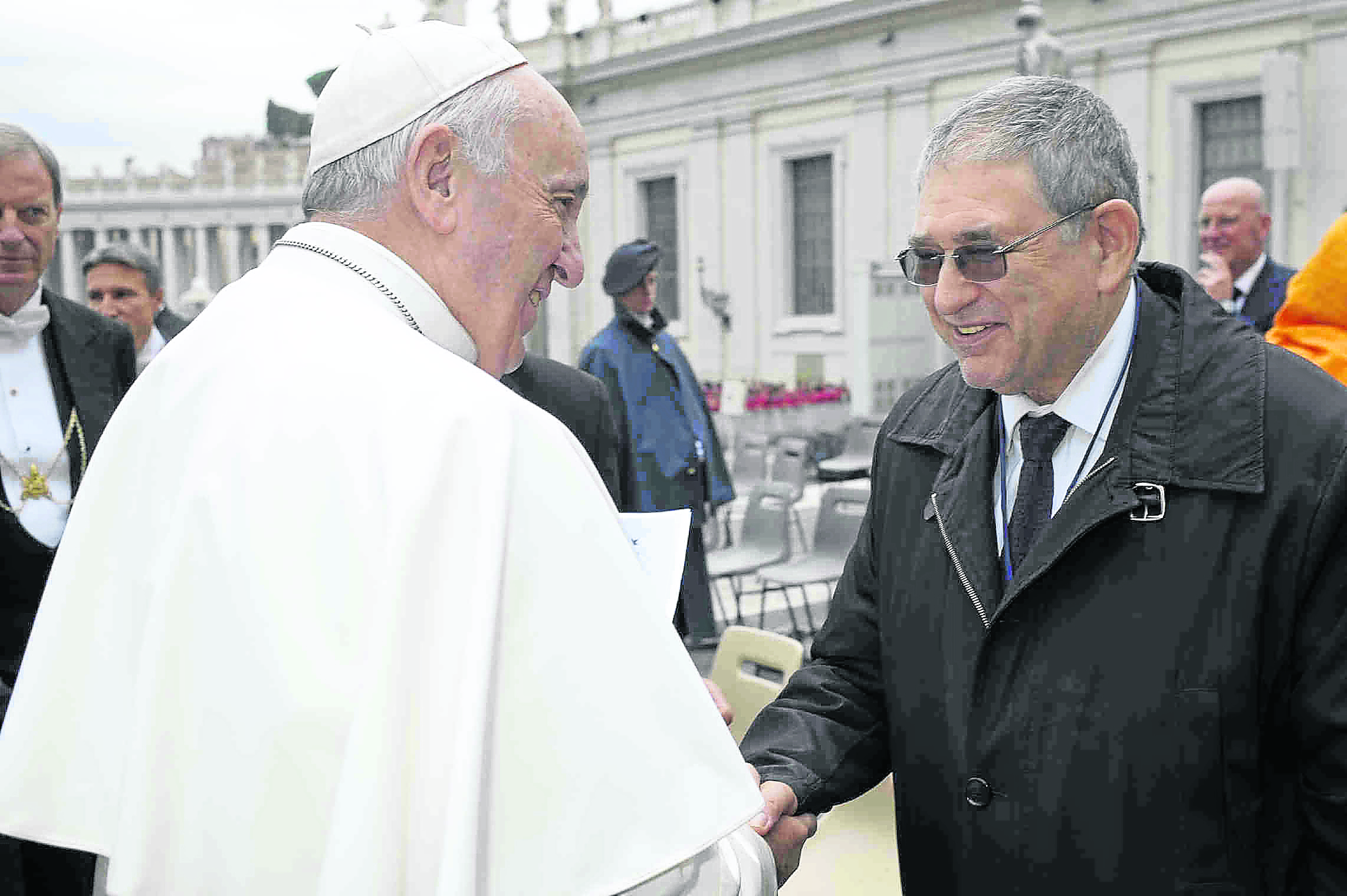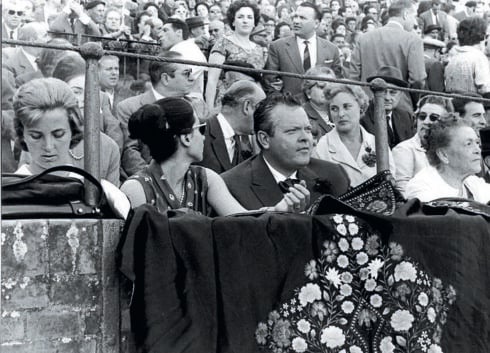HOW could a stockpile of looted Nazi gold larger than some country’s bullion reserves disappear without trace?
The macabre mystery has been the subject of tireless investigations, books, conspiracy theories and even a failed civil suit brought against the Vatican Bank in January 2000. But the true story, and Spain’s part in it – possibly Gibraltar’s too – has never fully come out.
The story began on a cold and shivery morning in February 1945 with a covert meeting in Madrid.
The clandestine assembly took place in the plush top floor office of the Instituto de la Moneda, attended by its director and the heads of both the German and British secret services.
The topic: to decide, allegedly, how to divide up the enormous stockpile of Nazi gold – much of it looted from Jews – that had found its way into Spain towards the end of the Second World War.

“There were two British agents and four German agents,” claims Dr Shimon Samuels, who has investigated the movement of looted gold for decades. “Each of them were making offers. The British wanted the gold, insisting it should not fall into the hands of the Americans, while the Germans wanted their gold protected by Franco, officially to be used for post war reconstruction in Germany.
“But we think it went to Operation Odessa to help Nazis escape to South America.”
The piles of gold in question – conservatively estimated to have a value of at least $138 million – had been amassed in a series of safe deposit boxes at the Institute over the previous few years.
While many of the gold ingots had been looted from the bank accounts of Jews across Eastern Europe and Germany through the 1930s and early 1940s, much of it had come from a much more sinister source.
“A lot of it was tooth gold extracted from people who had been exterminated in the concentration camps,” explains Dr Samuels, the Director for International Relations at the Simon Wiesenthal Centre in Jerusalem.

“This was looted gold and it should not have been here in Spain nor, most pertinently, should the British have had anything to do with it. There was clearly a lot of hanky panky going on.”
The fascinating chain of events first came to light when Samuels and his colleague Dr Ephraim Zuroff, the world’s most famous Nazi-hunter, spent time in Spain alongside Spanish investigator Jose Maria Irujo.
The group had been trying to ascertain how and where the billions of dollars in Nazi gold had ended up after the war in September 1945.
Most importantly they wanted to know who among the Nazi hierachy might have benefited from it. They spent a number of months compiling a list of ten key people who were allegedly still living in Spain in the 1990s – scattered around the country but mostly in Andalucia. They handed this list in person to then Spanish President Jose Maria Aznar, who insisted there was little that could be done.
The ingot trail drew more success and the team of investigators quite literally struck gold when they stumbled upon the ageing widow of the former director of the Instituto de la Moneda.
“It was a stroke of luck that she was still alive to tell us the story,” says Dr Samuels. “And, even better, she recalled how all of her best sheets, blankets and tablecloths had disappeared around that time and how she now realised that they had almost certainly been used to cover and carry the mountains of gold ingots.”
On top of that, the widow had even kept a copy of her late husband’s diary, including the entries for 1945, which included a string of meetings held with both German and English agents in Madrid.
Taking place in February and March, most interesting of all was the entry in the diary for April 19.

“It noted simply that the gold had been put on a train to Tarifa and from there it was transferred to a building in Gibraltar.”
An intriguing and highly damning note for the Allied authorities, the team from the Simon Wiesenthal Centre wasted no time in heading south to investigate further.
But after weeks of pressing, the Gibraltar authorities insisted they were unable to find any sign of the gold.
“Of course we pushed them but we met a complete brick wall. The trail went cold. It was absolutely scandalous.”
The Gold Trail that emanated from Germany in the 1940s spread out in a number of directions.
It included everything from silverware and watches to wedding rings and gold teeth stained with human blood. The Nazis had seized most of it as they ejected Jews from their homes around Eastern Europe and Germany.
Remarkably efficient, the Jews’ belongings were minutely chronicled, explained investigator Ronald Zweig. “The crucial period was around April 1944, when the Jews were handing over their property; it was put into individual bags and closed in front of them,” he explained. “The address was recorded, and they were given receipts, but within weeks it all became meaningless because these people were shipped off to Auschwitz and didn’t survive.”

Often melted down into ingots, the gold was used throughout the war to buy raw materials from around Europe including much from Spain, through a complex network of companies.
At the centre of this German-Spanish trading relationship was the large commercial conglomerate Sociedad Financiera Industrial (SOFINDUS), formed in 1936. Through special agreements, SOFINDUS eventually acquired a commercial empire that included 10 agricultural subsidiaries, nine transportation companies and significant mining interests.
In shipping alone, by 1941 it was operating as many as 53 vessels with a combined capacity of 55,000 tons.
SOFINDUS served as the Nazis’ commercial agency in Spain, handling all non-military trade and developing its nascent mining and agricultural industries, principally to supply the Third Reich with raw materials vital for its economy and war industries.
By 1941 Germany was buying almost all of Spain’s iron ore for its weapons industry, paid for in gold, the only ‘currency’ it had.
After the German surrender in 1945, an Anglo-AmericanTrusteeship took control of German businesses and properties in Spain. By July 1946 their worth totalled 278 million pesetas ($25.3 million) out of an estimated 1,045 million pesetas ($95 million) of German assets in Spain.

The Allies based their estimates of Spain’s wartime gold acquisitions on captured German Reichsbank records, statements by Swiss banking officials and records seized from the offices of SOFINDUS. Conservative estimates put the amount of gold Spain acquired between 1942 and 1945 at a minimum 122 tonnes of gold worth around $138 million. Of this 11 tonnes came from Germany, 74 tonnes from the German account at the Swiss National Bank and 37,852 tonnes directly from the Swiss National Bank, which the Allies believed included loot.
The report concluded that of this total, an estimated 72% of the gold Germany used during this period was looted.
What is also now quite apparent was that the ease with which the Nazis could cloak their businesses in Spain was due to the ease with which Spanish officials could be corrupted. It also became clear that Tangiers and Morocco were being used as a conduit to move Nazi assets from Spain and Portugal to Argentina. This conduit confirms leading Nazi Martin Bormann’s infamous programme of flight capital.
In the autumn of 1944, the Allies made their first request for Spain to cease all gold transactions involving enemy interests. Spain failed to reply. In January 1945, the Allies cut off all land routes between Spain and Germany. In May that same year, Spain finally issued a decree to freeze and immobilise all assets with Axis interests.
Negotiations with Spain started in November 1946 in Madrid and dragged on through 1947 beforefinal agreement was reached on both Nazi assets and the gold issue on May 3, 1948.
But by then the gold was long gone. In total, Spain agreed to repatriate just $114,000 in gold, much of it believed to have come from the Netherlands – a scandalous fraction of what had been stolen and later ferreted away.
Even more of a ‘joke’ – as part of the agreement the Allies were forced to issue a statement insisting that Spain had been ‘unaware’ that the gold had even been looted by the Nazis in the first place.
This shady chapter in the history of Spain – and, in particular, the involvement of Gibraltar – has still not been properly resolved nor investigated.
Neither the British government (Sir Malcolm Rifkind was approached at the time), nor the Spanish authorities were prepared to help in the location of the looted gold and other treasures.
“It is why Spain was such a popular destination for Nazis,” says Dr Ephraim Zuroff, who has spent four decades tracing Hitler’s former associates around the globe. “Most of them came in the 1940s and 1950s and, under Franco, they obviously got a good reception.
“The amazing thing was that in 1975 nothing changed. They could still live in peace.”
Indeed it wasn’t until Zuroff and his team started to investigate the movements of leading Nazis, such as Aribert Heim (known as Doctor Death for his part in the massacre of numerous Jews – and Spaniards – in Mauthausen Concentration Camp) that the world started to learn about their existence in Spain.
El Pais journalist Irujo worked hard to locate a string of wanted Nazis, including Belgian Leon Degrelle.
But Spain still didn’t take much interest,” said Zuroff. “They basically favoured the biological solution and I guess we had other more important countries to investigate, so we kind of let them off the hook.”
As for where the gold is now, some say it could still be in safe deposits in Gibraltar, others that it was distributed to help Nazis flee to South America.
“The ultimate destination of the gold is anyone’s guess, but I imagine some went to Africa and plenty went to Nazis fleeing Germany to live in Spain,” said Dr Samuels.
Either way, the Gold Train is one subject that is unlikely to be derailed.
While temporarily on the buffers, it is extremely likely that there are officials in Gibraltar, or their older family members, who can shed light on this disgraceful chapter in Europe’s recent history.
Click here to read more La Cultura News from The Olive Press.








